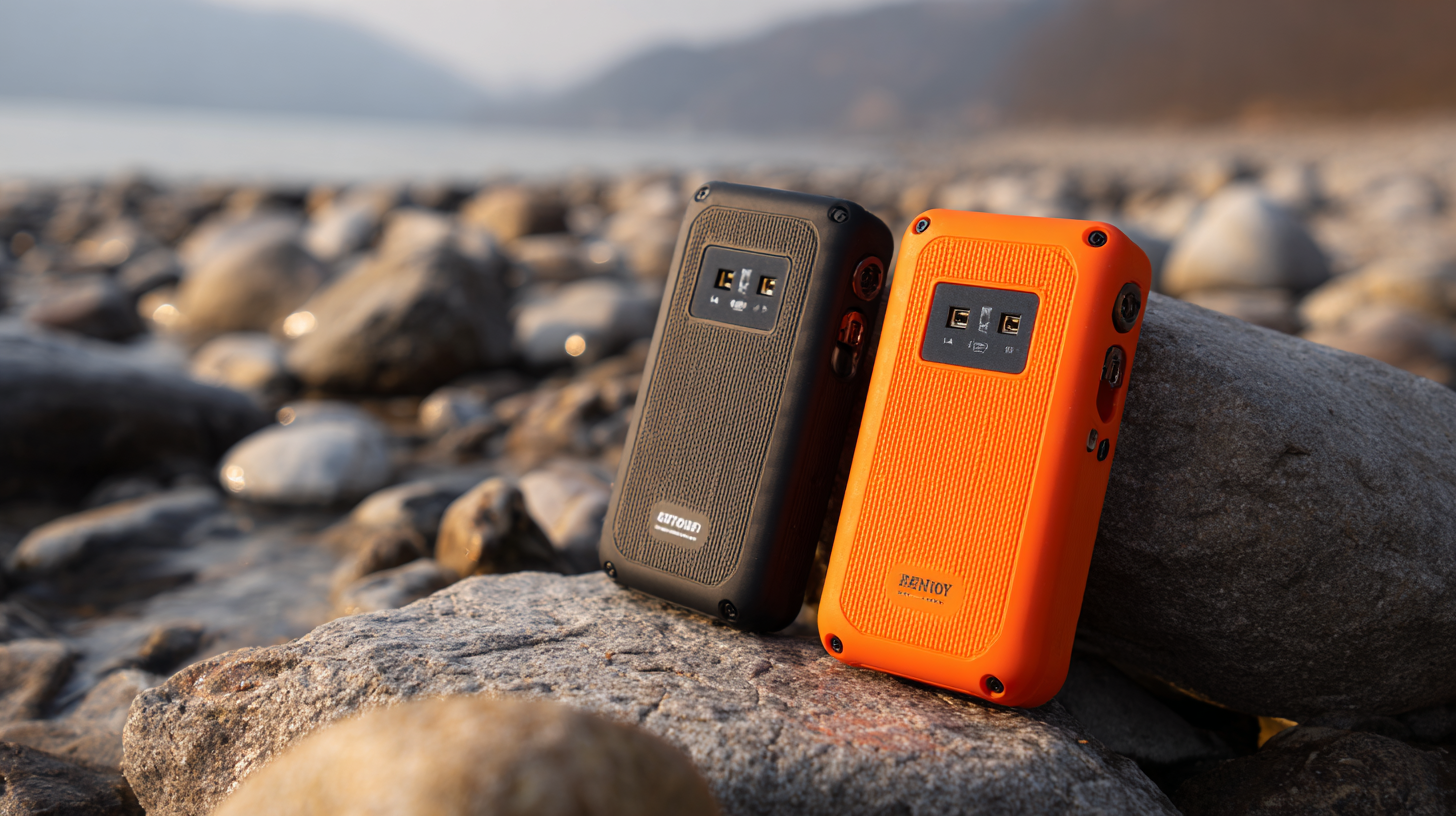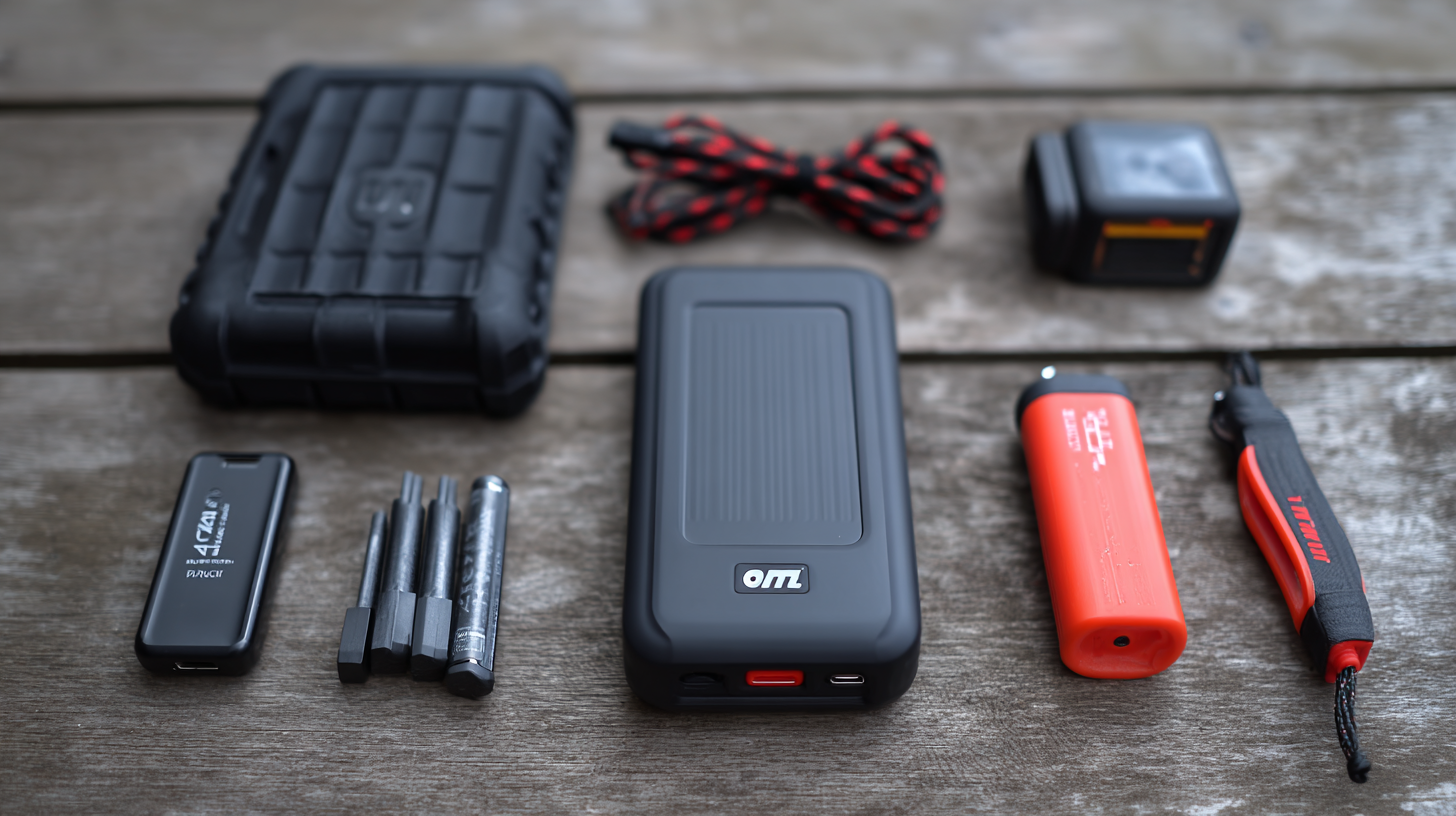
How to Choose the Best Outdoor Power Bank for Your Adventures
In today's world, where connectivity and device usage continue to rise, the demand for reliable energy sources during outdoor adventures is more crucial than ever. According to a recent study by Statista, the global portable power bank market is projected to reach approximately $30 billion by 2025, reflecting the growing reliance on devices such as smartphones and GPSs while on the go. For adventurers, an Outdoor Power Bank is not just a convenience but a necessity to ensure they stay connected regardless of their surroundings.

With a plethora of options available, choosing the best Outdoor Power Bank can be challenging. Essential factors like battery capacity, weight, durability, and charging speed must be considered to match the unique needs of your adventures. This guide will help you navigate these factors, ensuring that you select the ideal power bank to keep your devices charged and ready for anything the great outdoors has to offer.
Key Features to Look for in an Outdoor Power Bank
When choosing the best outdoor power bank for your adventures, several key features should guide your decision-making process.
First and foremost, consider the battery capacity. A higher capacity, measured in milliamp hours (mAh), ensures that your devices stay charged throughout your trip. For weekend camping trips, a power bank with at least 10,000mAh is a solid choice, while longer excursions may require 20,000mAh or more.
Another crucial feature to look for is durability. Outdoor activities expose your gear to various elements, so choose a power bank that is
shockproof, waterproof, and dustproof. Look for products with an IP rating, indicating resistance to water and dust ingress. Additionally, features like built-in solar panels can provide a convenient way to recharge the power bank in the wild, prolonging its usability during extended outdoor adventures.
Finally, assess the number and type of ports available, ensuring compatibility with your devices—USB-C and multiple output options can be particularly advantageous for charging more than one gadget simultaneously.
Understanding Capacity and Output: What You Really Need
When choosing the best outdoor power bank for your adventures, understanding capacity and output is crucial. The capacity of a power bank, usually measured in milliampere-hours (mAh), indicates how much energy it can store. A higher capacity allows for multiple charges of your devices, making it vital for long trips. For instance, a power bank with at least 10,000 mAh can recharge a standard smartphone two to three times, while those with 20,000 mAh or more are better suited for tablets and more power-intensive gadgets.

Output is equally important as it determines how quickly your devices can be charged. Look for power banks with multiple output ports and varied output levels, typically ranging from 1A to 2.4A or even higher for quick charge capabilities. This ensures that your devices, whether they are smartphones, tablets, or wearable tech, charge efficiently. Balancing both capacity and output will provide a seamless charging experience during your outdoor adventures, allowing you to focus on enjoying nature rather than worrying about battery life.
Durability and Weather Resistance: Essential for Outdoor Usage
When embarking on outdoor adventures, the reliability of your gear significantly hinges on its durability and weather resistance, particularly for devices like power banks. According to a report by Grand View Research, the global portable power bank market is projected to reach $25.16 billion by 2025, reflecting a growing trend in outdoor recreational activities. This increase emphasizes the necessity for power banks that can withstand harsh conditions while providing a stable charge for your devices.
Choosing a power bank with a robust, rugged design is crucial. Look for products with IP ratings, such as IP67 or higher, which indicate excellent resistance to dust and water submersion. Furthermore, a survey by Statista revealed that 62% of outdoor enthusiasts consider battery longevity essential, making it imperative for power banks to not only endure physical challenges but also maintain a reliable and extended power supply. Ensuring your outdoor power bank meets these durability standards will ensure it remains functional through the rigors of nature.
Durability and Weather Resistance of Outdoor Power Banks
Comparing Different Types of Power Banks for Adventurers
When planning outdoor adventures, selecting the right power bank can make all the difference. Various types of power banks cater to different needs, and understanding their differences is key. For instance, lithium polymer batteries are lightweight and compact, making them ideal for backpackers, while lithium-ion models offer higher capacity and longevity, suitable for extended trips. According to a recent industry report by Statista, the portable power bank market is expected to reach over $20 billion by 2026, reflecting the growing demand among outdoor enthusiasts.
**Tips:** When choosing a power bank, consider capacity measured in milliamp hours (mAh); for example, a 10,000 mAh power bank can charge a smartphone multiple times. Additionally, look for weather-resistant models to ensure durability in rugged environments.
For adventurers who require high-speed charging, selecting a power bank with Quick Charge or Power Delivery features can significantly reduce charging time. A research study by Grand View Research highlights that 60% of consumers prioritize fast charging capabilities when purchasing portable chargers. Remember to check for additional features like built-in cables or multiple ports to keep all your devices powered simultaneously.
Budget Considerations: Finding the Best Value for Your Needs
When selecting the best outdoor power bank for your adventures, budget considerations play a pivotal role in ensuring you find the best value without compromising on quality. According to a recent industry report from Grand View Research, the global portable power bank market size was valued at approximately $1.45 billion in 2020 and is projected to expand at a compound annual growth rate (CAGR) of 15.0% from 2021 to 2028. This growth reflects an increasing demand for efficient and reliable power solutions among outdoor enthusiasts.
To maximize your investment, it's essential to understand the balance between cost and features. Many reliable options are available under $50, especially those featuring dual USB outputs that allow multiple devices to charge simultaneously. Reports indicate that power banks with 20,000 mAh capacity are ideal for longer trips and are often found at competitive prices. Additionally, features like solar charging capabilities or rugged design often come at slightly higher price points but can enhance longevity and usability during your adventures. By weighing these factors, you can choose a power bank that not only fits your budget but also meets your unique outdoor needs effectively.

